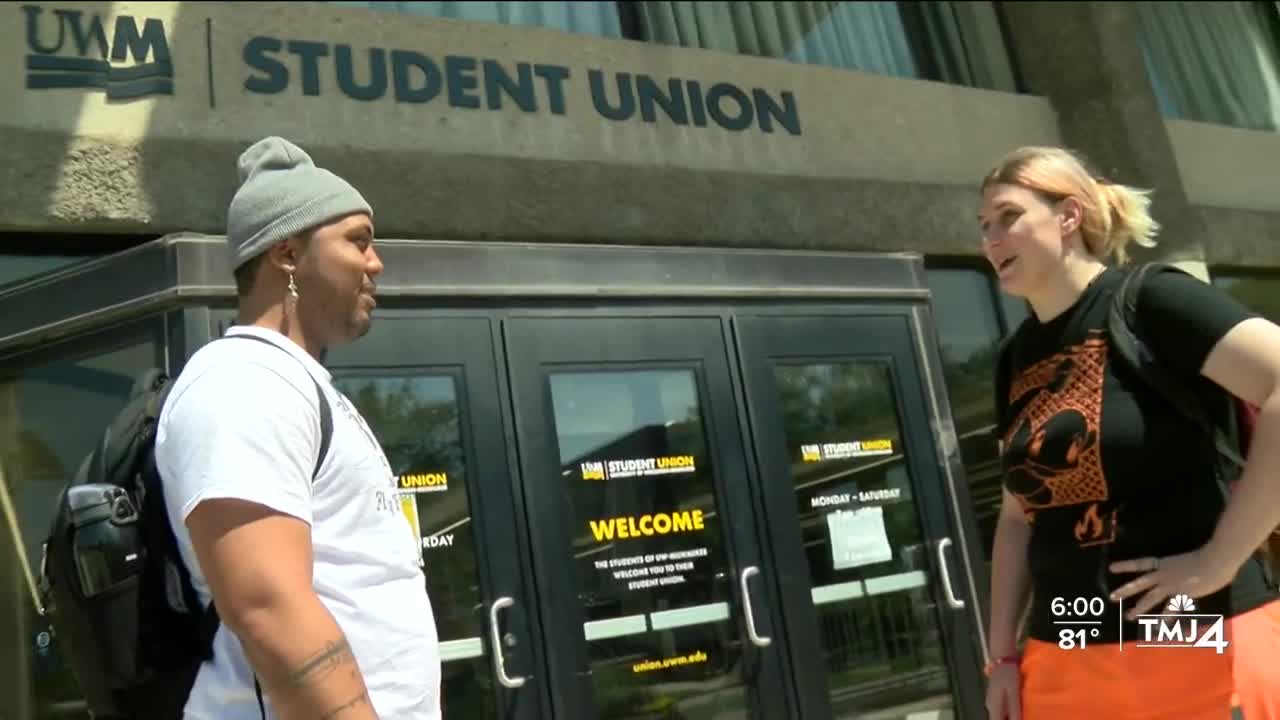SOUTH MILWAUKEE, Wis. — As students head back to class, school leaders must decide if artificial intelligence (AI) technology will be allowed in the classroom. It has districts throughout southeastern Wisconsin taking a hard look at AI.
University of Wisconsin-Milwaukee student Brandon Pinion says AI is something he has come to rely on. But if you are not familiar with the various artificial intelligence platforms, it may sound like he is speaking a foreign language.

"I use ChatGPT. I use Midjourney,” says Pinion. ”Bard, sometimes I switch between the Bing chat which uses the GPT port."
With all these AI platforms becoming so popular, South Milwaukee School District teachers have been hard at work deciding what their policy should be.

"We've seen all sorts of different AI products pop up in our classrooms, some being used appropriately by students, others not,” said Brian Gannon, technology coordinator at the South Milwaukee School District.
There are concerns students will use AI to plagiarize when it comes to things like writing papers. But the question teachers and administrators are trying to answer is whether AI could be used as a tool.

"What level of AI work is plagiarism? If I take AI and I adjust it, and I edit it and I use some of the points from that, is that still plagiarism? So those are the conversations that we have had in the spring and plan to continue into the fall,” said Gannon.
"You have to moderate what you allow in schools and what you are doing when you work with children. Because you want to make sure it is safe for them. You want to make sure it is appropriately meeting their needs,” said Deidre Roemer, superintendent of schools at the South Milwaukee School District.

TMJ4 News reached out to other districts in the area to see how they are handling AI.
Milwaukee Public Schools says it has banned ChatGPT on all school devices.
But school districts in Kenosha, Racine, Sheboygan, Mequon-Thiensville, Cedarburg, and Franklin say they do not have policies in place.
David Williamson Shaffer, the Sears Bascom Professor of Learning Analytics and the Vilas Distinguished Achievement Professor of Learning Sciences at the University of Wisconsin-Madison, has been studying AI in education. He sees districts across the country taking different approaches all the way from bans to using AI to teach.
"People are doing variations of all of these things. I think that because AI is not gonna go away anytime soon. Simply trying to you know, ban it, or ignore it are not gonna work, and that a better approach is to actually start to integrate it into our instructional practice,” said Shaffer.
Schaffer believes AI is the future not only for learning but in the workforce too.
"Every time a new technology appears, and this is not the first time, we saw this when the Internet appeared in the 1990s. Calculators, graphing calculators came in classrooms in the 1980s. Before that, typewriters were a big deal when they were introduced, and so on. So new technologies come and schools adapt,” said Shaffer.

"Eventually, do I see us using AI tools in schools all over the place? Sure, because I think it is going to become second nature to all of us in our lives. What (does) that mean today? That's the exploratory phase we are in,” said Roemer.
"It is the future and if anything schools, teachers shouldn't necessity catch kids using it but figure out how to implement it into their curriculum, into their instruction,” said Pinion.
The South Milwaukee School District says they hope to have some sort of policy written on how AI should be in classrooms sometime this winter.
It’s about time to watch on your time. Stream local news and weather 24/7 by searching for “TMJ4” on your device.
Available for download on Roku, Apple TV, Amazon Fire TV, and more.




